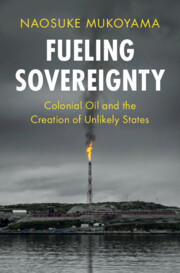Book contents
- Fueling Sovereignty
- LSE International Studies
- Fueling Sovereignty
- Copyright page
- Dedication
- Contents
- Figures
- Tables
- Acknowledgments
- 1 Introduction
- 2 Theory of Separate Independence
- 3 Colonial Oil and Decolonization in Borneo
- 4 Colonial Oil and Decolonization in the Lower Gulf
- 5 Separate Independence in Other Settings
- 6 Varying Historical Impacts of Resource Endowment
- 7 Conclusion
- References
- Index
3 - Colonial Oil and Decolonization in Borneo
The Separate Independence of Brunei
Published online by Cambridge University Press: 14 March 2024
- Fueling Sovereignty
- LSE International Studies
- Fueling Sovereignty
- Copyright page
- Dedication
- Contents
- Figures
- Tables
- Acknowledgments
- 1 Introduction
- 2 Theory of Separate Independence
- 3 Colonial Oil and Decolonization in Borneo
- 4 Colonial Oil and Decolonization in the Lower Gulf
- 5 Separate Independence in Other Settings
- 6 Varying Historical Impacts of Resource Endowment
- 7 Conclusion
- References
- Index
Summary
Focusing on the island of Borneo, this chapter explains why Brunei – but not the other administrative units on Borneo – achieved separate independence. Nineteenth-century European expansion into Southeast Asia divided the island of Borneo into four administrative units: Brunei, Sarawak, North Borneo, and Dutch Borneo. The first three, located in the northern part of the island, were under British colonial rule, while the southern half was under Dutch colonial rule. They were highly similar to each other prior to colonization, but their decolonization outcomes diverged; Dutch Borneo became part of Indonesia, and Sarawak and North Borneo became part of Malaysia, while Brunei rejected to be merged into Malaysia in 1963 and eventually became independent separately in 1984. This chapter conducts historical within-case and comparative case studies to show that oil and the protectorate system enabled Brunei’s separate independence, while the lack of these two factors resulted in the incorporation of the other three colonial units into larger entities.
- Type
- Chapter
- Information
- Fueling SovereigntyColonial Oil and the Creation of Unlikely States, pp. 56 - 96Publisher: Cambridge University PressPrint publication year: 2024

